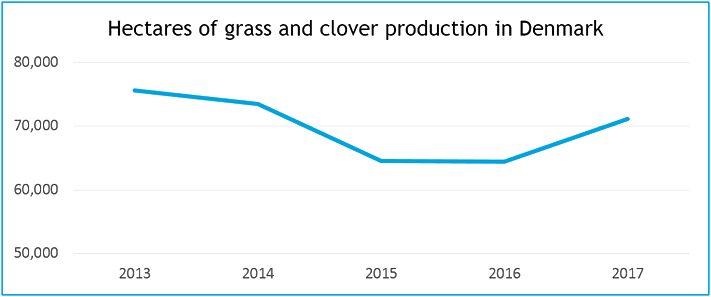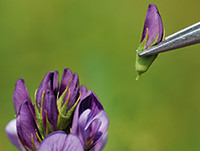Spring season starts with good weather and good business
After another mild winter, spring has started early with good March weather across many parts of Europe. As a result, spring also came early to our shipping departments. This March we beat our five-year average for shipping volumes by a large margin.
12/05/2017

Turf: tight supply in many species
Shipping movements for turf grasses are especially strong for both consumer and professional use. This tight market is putting upward pressure on wholesale prices for many species. Smooth stalked meadow grass, tall fescue and hard fescue are in short supply, as is chewings fescue, which faces strong demand.
 Our 4turf® concept is a great success. Sales were up significantly for this range of tetraploid perennial ryegrass varieties. 4turf® is strong, deep-rooting, and stress-tolerant; it withstands drought, disease, and insect attack.
Our 4turf® concept is a great success. Sales were up significantly for this range of tetraploid perennial ryegrass varieties. 4turf® is strong, deep-rooting, and stress-tolerant; it withstands drought, disease, and insect attack.
Stable US prices and a strong dollar continue to hold back turf imports from America. Reduced production and stronger prices are also depressing European import for Canadian red fescues.
As well as selling more seed internally, Europe is exporting more to Turkey, China and Russia. Demand from China is very strong.
Production: after disappointing harvest 2016, slight increase in crop 2017
The 2016 Danish harvest was down. The acreage was low and yield was 12% below the five-year average. The worst performer (yield 25% below its five-year average) was smooth stalked meadow grass which experienced dry weather during the growing season.
Since consumption remains strong, we have compensated for the disappointing 2016 harvest by increasing acreage for 2017 through extending fields where possible, especially for species in short supply. Our aim is to strike a better balance between supply and demand. So far, the weather is on our side. The mild winter produced limited winter kill in Denmark and the Netherlands, and crops continue to grow well. There has, however, been some winter damage in Poland and Eastern Germany.

Source: Ministry of Environment and Food of Denmark, The Danish Agrifish Agency.
Forage: greening and rising milk prices raise demand
After a difficult year, the forage market has recovered with rising autumn demand, especially in the Netherlands. The good news is that milk prices have risen, step by step, since June when they were at their lowest. We have also seen a much stronger demand for organic seed as more dairy farms have converted to organic in response to last year's low prices in the conventional segment.
 A focus on farm-grown protein has pushed up demand for clovers and alfalfa. Following our acquisition of the Florimond Desprez alfalfa programme, we have been able to offer a broader portfolio of alfalfa varieties.
A focus on farm-grown protein has pushed up demand for clovers and alfalfa. Following our acquisition of the Florimond Desprez alfalfa programme, we have been able to offer a broader portfolio of alfalfa varieties.
In Russia, the forage market continues to develop in the wake of a strengthening Ruble. Sales of forage mixtures were up, as they were for high-performing festulolium, clovers and alfalfa.
After adjustments to the acreage grown in Denmark and the Netherlands, and a recovery in the forage market, forage perennial ryegrasses are now in balance. After years of shortages, there is more timothy and meadow fescue. Open timothy varieties from Canada are especially easy to find. The market is tighter, however, for high-quality recommended varieties of timothy, and for forage tall fescue, cocksfoot and Italian ryegrass.
The popularity of Italian ryegrass is driven by the developing needs of the cover-crop segment. In fact, all types of cover-crop mixtures are in demand following the introduction of greening rules within the Common Agricultural Policy. Forage grasses are also benefiting from greening, a policy that links farming subsidies to actions that help conserve the environment and cut greenhouse-gas emissions. The most popular grass species for greening are Italian and westerwoldicum ryegrasses and, to a lesser extent, perennial ryegrass.
Your DLF rep knows the market
The seed market is notoriously difficult to predict. Each year brings something unexpected as the weather, fluctuating milk prices and unexpected changes in demand affect prices and availability. Luckily, you have an ally in your local DLF representative – and do not hesitate to call today to learn more about trends and opportunities in your market.

